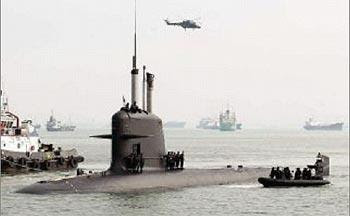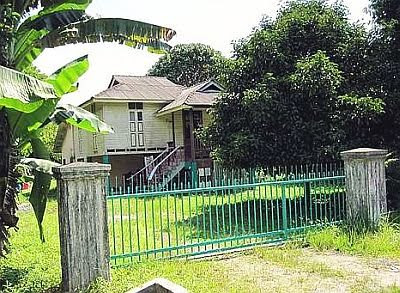Research and Analysis Wing [RAW]
The Research and Analysis Wing [RAW] is India's foreign intelligence agency. RAW has become an effective instrument of Indian national power, and has assumed a significant role in carrying out India's domestic and foreign policies. RAW has engaged in espionage against Pakistan and other neighboring countries. It has enjoyed the backing of successive Indian governments in these efforts. Working directly under the Prime Minister, the structure and operations of the Research & Analysis Wing are kept secret from Parliament.
Founded in 1968, RAW focused largely on Pakistan. Its formation was initially motivated by reports of Pakistan supplying weapons to Sikh militants, and providing shelter and training to guerrillas in Pakistan.
Numerous missions were assigned to RAW upon its creation. These included monitoring political and military developments in neighboring countries that affects Indian national security. Consequently, considerable attention is paid by RAW to Pakistan and China, countries that are traditional rivals of India.
RAW has evolved from its origins as a part of the Intelligence Bureau to develop into India's predominant intelligence organization. In 1968, RAW had 250 agents and a budget of Rs. 2 crore. This has expanded to a 2000 total of an estimated eight to ten thousand agents and a budget that experts place at Rs. 1500 crore, alternately estimated at $145 million.
Pakistan has accused the Research and Analysis Wing of sponsoring sabotage in Punjab, where RAW is alleged to have supported the Seraiki movement, providing financial support to promote its activities in Pakistan and organizing an International Seraiki Conference in Delhi in November-December 1993. RAW has an extensive network of agents and anti-government elements within Pakistan, including dissident elements from various sectarian and ethnic groups of Sindh and Punjab. Published reports in Pakistan allege that as many as 35,000 RAW agents entered Pakistan between 1983-93, with 12,000 working in Sindh, 10,000 in Punjab, 8,000 in North West Frontier Province and 5000 in Balochistan.
RAW has a long history of activity in Bangladesh, supporting both secular forces and the area's Hindu minority. The involvement of RAW in East Pakistan is said to date from the 1960s, when RAW supported Mujibur Rahman, leading up to his general election victory in 1970. RAW also provided training and arms to the Bangladeshi freedom fighters known as Mukti Bahini. RAW's aid was instrumental in Bangladesh's gaining independence from Pakistan in 1971.
During the course of its investigation the Jain Commission received testimony on the official Indian support to the various Sri Lankan Tamil armed groups in Tamil Nadu. From 1981, RAW and the Intelligence Bureau established a network of as many as 30 training bases for these groups in India. Centers were also established at the high-security military installation of Chakrata, near Dehra Dun, and in the Ramakrishna Puram area of New Delhi. This clandestine support to the Liberation Tigers of Tamil Eelam (LTTE), some of whom were on the payroll of RAW, was later suspended. Starting in late 1986 the Research and Analysis Wing focused surveillance on the LTTE which was expanding ties with Tamil Nadu separatist groups. Rajiv Gandhi sought to establish good relations with the LTTE, even after the Indian Peace Keeping Force [IPKF] experience in Sri Lanka. But the Indian intelligence community failed to accurately assess the character of the LTTE and its orientation India and its political leaders. The LTTE assassination of Rajiv Gandhi was apparently motivated by fears of a possible re-induction of the Indian Peace Keeping Force (IPKF) in Sri Lanka and a crackdown on the LTTE network in Tamil Nadu.
RAW was heavily criticized in 1999, following the Pakistani incursions at Kargil. Critics accused RAW of failing to provide intelligence that could have prevented the ensuing ten-week conflict that brought India and Pakistan to the brink of full-scale war. While the army has been critical of the lack of information they received, RAW has pointed the finger at the politicians, claiming they had provided all the necessary information. Most Indian officials believe that in order to prevent another such occurrence, communication needs to be increased between the intelligence agencies, which would require structural reform.Most recently, RAW has gained attention for providing the US with intelligence on Al-Qaeda and Taliban targets for the war on terrorism in Afghanistan. Maps and photographs of terrorist training camps in Afghanistan and Pakistan, along with other evidence implicating Osama bin Laden in terrorist attacks, were given to US intelligence officials.
* * * The objectives of RAW include:
To monitor the political and military developments in adjoining countries, which have direct bearing on India's national security and in the formulation of its foreign policy.
To seek the control and limitation of the supply of military hardware to Pakistan, mostly from European countries, the USA and China.
The chief of the RAW is designated Secretary (Research) in the Cabinet Secretariat, which is part of the Prime Minister's Office (PMO). Most of the position's occupants have been experts on either Pakistan or China. The head of the Research & Analysis Wing (RAW), the external intelligence agency, enjoys greater autonomy of functioning than their counterparts in the UK and US and has the same privileged direct access to the Prime Minister as their UK counterparts. The control of the Cabinet Secretary over the RAW is limited to administrative and financial matters, with very little say in operational and policy matters.
They also have the benefit of training in either US or the UK, and more recently in Israel. The Secretary (R) reports on an administrative basis to the Cabinet Secretary, who reports to the Prime Minister (PM). However, on a daily basis the Secretary (R) reports to the National Security Advisor. Reporting to the Secretary (R) are: Two Special Secretaries and one Special Director of the ARC, the Aviation Research Centre; Four Additional Secretaries, responsible for different geographical regions; A large number (above 40) Joint Secretaries, who are the functional heads of various desks.
The structure of the RAW is a matter of speculation, but brief overviews of the same are present in the public domain. Attached to the HQ of RAW at Lodhi Road, New Delhi are different regional headquarters, which have direct links to overseas stations and are headed by a controlling officer who keeps records of different projects assigned to field officers who are posted abroad. Intelligence is usually collected from a variety of sources by field officers and deputy field officers; it is either pre-processed (vetted) by a senior field officer or by a desk officer. The desk officer then passes the information to the Joint Secretary and then on to the Additional Secretary and from there it is disseminated to the concerned end user. The Director RAW is a member of the JIC Steering Committee and is authorized to brief the Prime Minister should the need arise.
Some officers of the RAW are members of a specialized service, the Research and Analysis Service (RAS), but several officers also serve on deputation from other services. The RAW has sub-organizations like the Aviation Research Center (ARC), the Radio Research Center (RRC) or the Electronics and Technical Service (ETS), which have considerable capacity for technical intelligence gathering. Another important branch under the operational control of the RAW is the Directorate General of Security (DGS). This agency has oversight over organizations like the Special Frontier Force (SFF), the Special Services Bureau (SSB) etc... Liaison with the military is maintained through the Military Intelligence Advisory Group and the Military Advisor to the Director RAW.
Though the RAW is primarily intended for collecting intelligence beyond India's national borders, it has over time come to have a strong presence in all fields of intelligence gathering. The RAW was brought into internal security issues during the Sikkim situation, it played a role in the events of the emergency of 1977-79, it was asked to operate in Punjab to counter-balance the presence of the ISI (and so also in Kashmir), and the RAW has provided the security for the India's nuclear program. Right from its formation in 18 September, 1968, R N Kao, the founding father of RAW, picked up the best men from within government and from outside for RAW. A combination of military, academicians, bureaucrats and policemen was a fine start for RAW which modelled itself on the lines of CIA. [extracted from http://www.fas.org/]


Comments